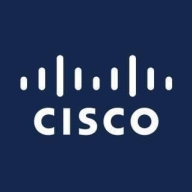

ExtremeWireless and Cisco Meraki Wireless LAN compete in the wireless LAN market. Cisco Meraki Wireless LAN stands out due to its advanced features like integrated security and cloud management, while ExtremeWireless is favored for its competitive pricing and strong customer support.
Features: ExtremeWireless offers robust connectivity, customizable configurations, and flexibility, making it appealing for enterprises seeking adaptive solutions. Cisco Meraki Wireless LAN features integrated network security, centralized cloud-based management, and high in-depth visibility of network activities, providing a comprehensive solution.
Room for Improvement: ExtremeWireless could benefit from faster deployment options, enhanced integration with cloud-based systems, and broader support for diverse environments. Cisco Meraki Wireless LAN might improve by reducing the initial cost, offering more personalization in support services, and expanding customization capabilities for advanced users.
Ease of Deployment and Customer Service: Cisco Meraki Wireless LAN offers streamlined deployment with centralized cloud management, simplifying oversight. ExtremeWireless needs manual configuration, which can extend setup time, but compensates with more personalized and responsive customer support.
Pricing and ROI: ExtremeWireless is known for competitive pricing and a favorable return on investment, appealing to budget-conscious enterprises. Cisco Meraki Wireless LAN has higher initial costs, but robust features and efficient management tools provide significant long-term value, justifying the investment despite a larger upfront cost.
The monitoring access and excellent support provide significant value.
The best ROI is achieved over a three-year term.
I would rate Cisco support a 10, as the response time and process via the dashboard are easy, and response times are always within the SLA.
It would be better if the SLA of technical support was less than four hours.
I rate their support as a nine because they are very helpful when we need assistance and they strive to help, even if not the fastest.
I would rate the customer service as a ten.
The response time and quality could be better, and updates can be troublesome at times.
Meraki is not scalable enough since it straightforwardly maps its products to segmented specifications.
ExtremeWireless is suitable for companies with a user base below three hundred.
The Extreme access points handle high-density connectivity needs very well, managing lots of traffic efficiently.
The scalability of ExtremeWireless is average.
Stability is not an issue for me because it comes with Cisco's proven manufacturer quality.
We have experienced many instances where we have experienced a lag in our network, and I am not sure if it is due to their devices or our network.
They work well without failures.
I experienced issues during firmware upgrades, as some devices required a physical restart, which affects system stability.
The stability of ExtremeWireless is somewhat weaker compared to previous solutions, like Motorola before its acquisition.
The most important improvement needed is to eliminate the limitation of uplinks.
Some of the newer models of the Cisco Meraki Wireless LAN access point have encompassed the new wireless protocols and increased the strength of their antennas.
I wish for ExtremeWireless to optimize the roaming capability between access points, especially for IoT devices.
Another area that could use enhancement is the clarity and implementation of updates, as they can be troublesome sometimes.
There is some delay in firmware upgrades for access points.
The pricing of Cisco Meraki Wireless LAN is not competitive enough for the SMB market compared to other brands.
Cisco Meraki Wireless LAN is on par with other devices in that category, offering competitive pricing.
My experience with the pricing of Cisco Meraki Wireless LAN is that it is competitive with other providers offering paid subscriptions.
Each customer typically buys around 100 APs, which makes it quite expensive.
The pricing is a weak point for Extreme; it is very high.
From a corporate point of view, stability is more important than pricing.
It also manages security clients and switches, providing a single dashboard to manage multiple network infrastructures.
The capability to configure network policies remotely is the most important aspect for our organization, as we are an MSP providing remote support for all our clients.
The ability to program all access points from the Cisco Meraki Wireless LAN dashboard, view the status of all of them, and examine the individual devices connected to each access point is very valuable.
A single license can be used for on-premises, hybrid, or cloud, allowing for easy transition between solutions without losing investment.
One of the most valuable features of ExtremeWireless is its centralized control, which influenced our choice.
Extreme access points perform very well in high-density environments, and we use them at sites with our customers.
| Product | Market Share (%) |
|---|---|
| Cisco Meraki Wireless LAN | 11.1% |
| ExtremeWireless | 2.0% |
| Other | 86.9% |


| Company Size | Count |
|---|---|
| Small Business | 69 |
| Midsize Enterprise | 26 |
| Large Enterprise | 31 |
| Company Size | Count |
|---|---|
| Small Business | 14 |
| Midsize Enterprise | 10 |
| Large Enterprise | 8 |
We monitor all Wireless LAN reviews to prevent fraudulent reviews and keep review quality high. We do not post reviews by company employees or direct competitors. We validate each review for authenticity via cross-reference with LinkedIn, and personal follow-up with the reviewer when necessary.